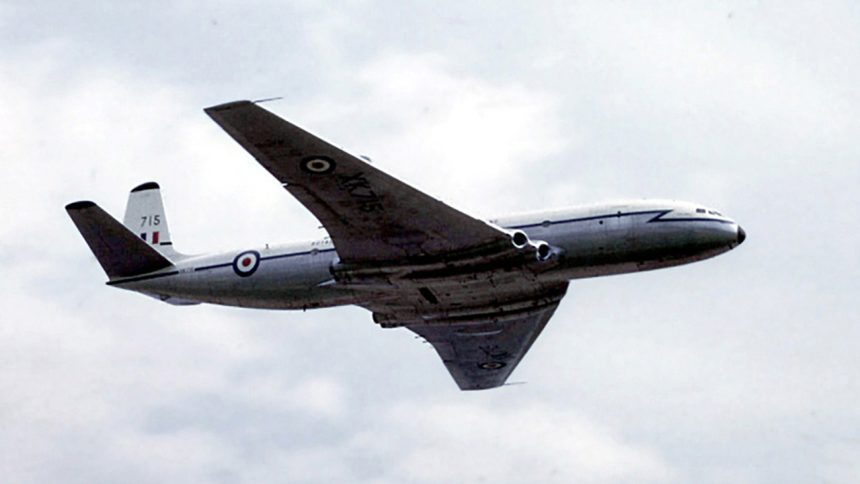July 27, 2024 marked the 75th anniversary of the first flight of the de Havilland Comet, the world’s first jet-powered airliner. This airliner had a troubled start to service, but eventually became a reliable workhorse.
The contract to produce the Comet was issued by the British government to the de Havilland Aircraft Company in 1945. The company, headed by engineer Geoffrey de Havilland, had gained a reputation for innovative and well-performing aircraft designs.
Before the Second World War, de Havilland had made its name producing a series of successful biplane designs. These included the DH.82 Tiger Moth, which became prolific as the Royal Air Force’s primary basic trainer aircraft from the early 1930s to the early 1950s, and the DH.89 Dragon Rapide which saw service as a civilian airliner and military transport across the world.
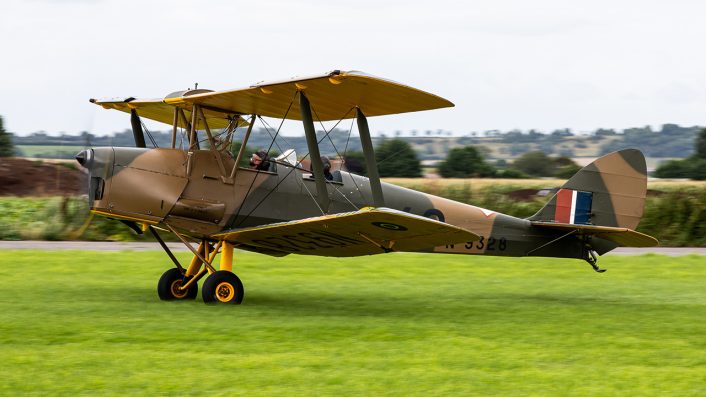
The DH.88 Comet, a very different aircraft to the DH.106 Comet that is the subject of this article, was a monoplane designed and constructed for the 1934 MacRobertson Air Race from London to Melbourne. The aircraft won the race, arriving in only 71 hours – a full 19 hours faster than the second placed competitor, a Douglas DC-2.
Experience gained from the production of this primarily wooden, sleek, high speed racer went on to inform the design of the de Havilland DH.98 Mosquito, a light bomber that entered RAF service in 1941 and quickly became a multirole jack-of-all-trades as well as one of the fastest piston-engined aircraft of the war. The Mosquito saw use in photo reconnaissance, maritime strike, fighter bomber, night fighter and pathfinder roles, among others, in essence becoming a forerunner for today’s multirole strike fighters.
As the British government looked to a future following the eventual end of the war, a committee was formed to draw up requirements for post-war civilian transport aircraft. One such requirement was for a fast airliner capable of traversing the Atlantic without needing to stop for fuel. At the time, early turbojet engines that were beginning to see operational service were deemed by officials to be too inefficient for such an aircraft, instead preferring the mature technology of piston engines. Geoffrey de Havilland disagreed with this assessment, and used his influence to permit a turbojet powered design.
The first Comets, designated Comet 1, utilized de Havilland’s Ghost turbojets, with two buried in each wing. The Ghost was de Havilland’s second jet engine, used to power the company’s Venom fighter as well as Sweden’s Saab 29 Tunnan. Later Comets would use the Rolls Royce Avon, also used by the de Havilland Sea Vixen, Hawker Hunter, English Electric Canberra and Vickers Valiant. Variants fitted with afterburners would see service on the Saab 35 Draken and English Electric Lightning.
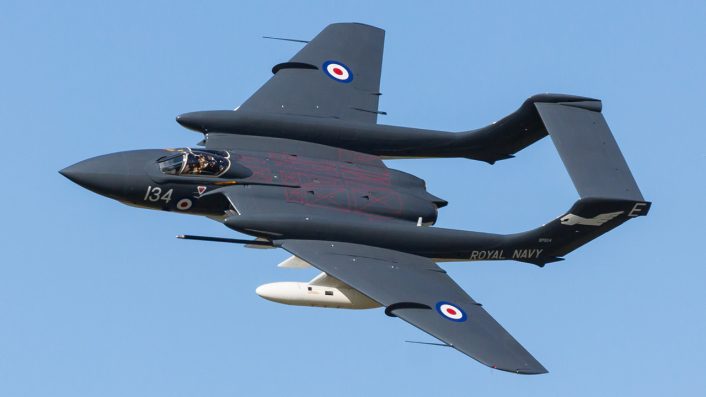
After three years of flight testing and trials, British Overseas Airways Corporation (BOAC) Comet 1 G-ALYP flew the world’s first ever commercial airline service carrying fee-paying passengers on May 2, 1952, from London to Johannesburg.
2 May 1952, the world’s first ever jet airliner, BOAC’s De Havilland Comet G-ALYP, began its maiden flight from London to Johannesburg. pic.twitter.com/dzjDp7yUNs
— Paul Feeney (@postwarhistory) May 2, 2023
Unfortunately, the Comet’s first hull-loss incident came only months later on Oct. 26, when G-ALYZ overran the runway at Rome Ciampino Airport on takeoff, causing minor injuries to two passengers. A similar incident occurred to a Canadian Pacific Airlines aircraft in Karachi on Mar. 3, 1953, though this time with fatal injuries to all eleven passengers and crew, becoming the first fatal jetliner crash. An investigation found that in cases of overrotation the aircraft’s wing could experience a loss of lift, so a modified wing profile was produced alongside the introduction of wing fences to mitigate the issue.
A series of high-profile fatal crashes, starting with the loss of G-ALYV in India in May 1953, followed by both G-ALYP and G-ALYY in separate incidents over the Mediterranean in 1954, led to the Comet 1’s airworthiness certificate being suspended. Investigations found metal fatigue to be at fault for the disasters, a phenomenon that had arisen from certain aspects of the Comet’s design combined with the high-stress operating conditions of a, for the time, high speed, high altitude airliner.
Contrary to popular belief, the aircraft’s window shape was not a contributing factor to the disasters. Often said to have had square windows, which supposedly had weak points in the corners, the Comet 1’s windows were in fact rectangular with rounded corners, very similar to those found on the Douglas DC-8. Subsequent Comet variants used oval windows for manufacturing reasons, as opposed to any issue with the previous shape.
Later models, like the Comet 2 and Comet 4, were designed to rectify the flaws identified with the Comet 1, but now faced competition from the American Boeing 707 and Douglas DC-8. Even the British flag carrier BOAC chose to procure the Boeing 707, which had a higher all round performance than the British design. Of the airlines who ordered the Comet 4, most only operated a handful of aircraft, the largest fleet from new being the 19 aircraft of BOAC.
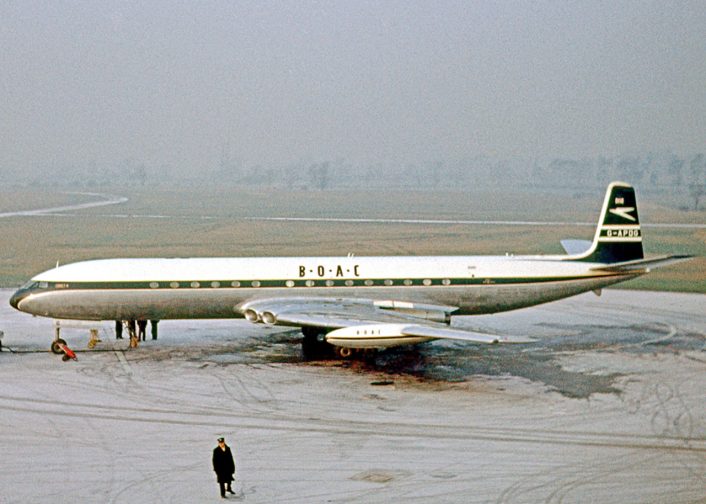
Notably, engineers from the American manufacturers commented that had de Havilland not experienced the Comet 1’s faults and therefore drawn attention to metal fatigue from pressurization cycles, it is likely they may have made similar errors.
BOAC flew their Comet 4s until 1965. Fellow British airline Dan Air procured forty nine Comets second hand from other airlines, including BOAC, and flew them in passenger service until the early 1980s. They were the last civilian airline to operate the type.
Military Service
The Royal Air Force had been allocated a number of Comet 2s after BOAC had withdrawn its order for that variant, and later also operated Comet 4s. 216 Squadron at RAF Lyneham operated ten Comet 2s, designated Comet C2 in RAF service, by 1957. The aircraft were used as multi-role transports, conducting passenger and freight flights as well as missions supporting VIP travel.
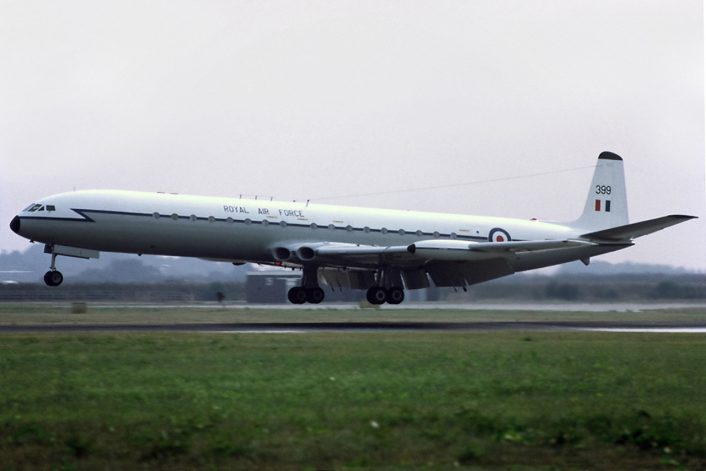
In 1958, three Comet C2s were modified into Comet C2Rs, becoming the Royal Air Force’s newest signals intelligence (SIGINT) capability. Serving with 51 Squadron, the aircraft were painted in the same white and grey livery and blue cheatline as much of the air force’s transport fleet. This helped the secretive aircraft blend in as they operated under the official term “radio proving flights”.
Operations were conducted throughout Europe, monitoring the Eastern Bloc over the Baltic and Barents Seas, and over Germany. Flights further afield saw deployments to the Mediterranean, Middle East and Pacific.
Many details of the Comet C2Rs operational missions remain unknown to this day, with many crew members reluctant to talk about their experiences due to the intense secrecy involved.
One C2R, XK663, was destroyed in a hangar fire just two years after delivery. The importance of the type was so paramount that a fourth aircraft, XK695, was converted to C2R standard as a replacement.
The Rise of Nimrod
In 1964, the British Air Ministry began seeking a replacement for the Royal Air Force’s maritime patrol fleet of Avro Shackletons. The Shackleton, powered by the Rolls Royce Griffon engines that had been employed by late models of the Spitfire, was derived from the Avro Lincoln and Lancaster designs of the Second World War.
A proposal by Hawker Siddeley, who had since acquired de Havilland, to produce a maritime patrol variant of the Comet won out against competition from the American P-3 Orion and French Breguet Atlantic, and was selected for production in 1965. The new aircraft was given the model number HS.801 and named Nimrod. It was based on the Comet 4 design, though with an extensively modified fuselage to incorporate a large radar and other electronic equipment, as well as a huge internal payload bay. The first two Nimrods, used primarily for airframe trials, were originally built as Comet 4s, undergoing the conversion while still being manufactured.
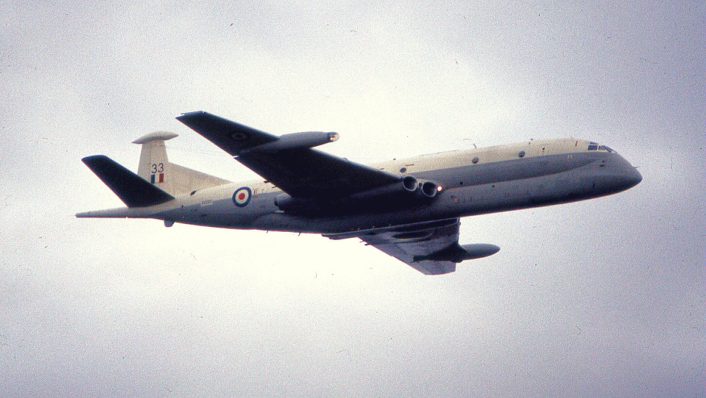
Alongside the maritime patrol version, the Nimrod was selected to replace Comet C2Rs in the SIGINT role. The Nimrod R1 entered service with 51 Squadron in 1974 undercover as radar calibration aircraft. The payload bay used on the MR1 for torpedoes, depth charges and life rafts, was put into use as an antenna farm for the sensitive SIGINT receiving equipment.
Although the Nimrod served an exceptionally long career, the aircraft, like its forerunner, became overshadowed by a number of high profile incidents. The most damning came in 2006, when XV230, a Nimrod MR2, caught fire and exploded in flight over Afghanistan on a reconnaissance sortie with the tragic loss of all crew. A public inquiry found fault with the aircraft’s aerial refueling system, which had been a retrofitted capability installed for the 1982 Falklands War, and criticized the Ministry of Defence for allowing the aircraft to fly with known design flaws.
The Nimrod MRA4 program, which involved transplanting new wings onto existing Nimrod airframes, effectively turning them into new airframes, was plagued by issues and cost overruns. After being canceled in the 2010 Strategic Defence and Security Review, the few completed MRA4 airframes were scrapped. The Nimrod MR2 was also culled in this review, retiring in March 2010, leaving the UK without a fixed wing maritime patrol aircraft until the arrival of the P-8 Poseidon MRA1 in 2020.
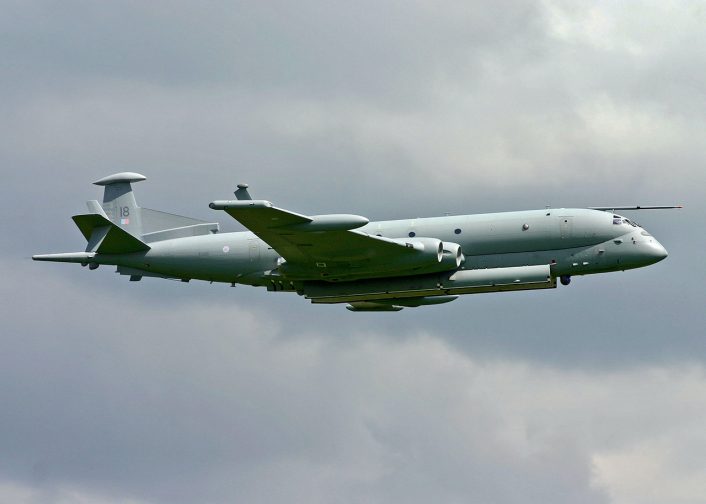
Nimrod R1s of 51 Squadron soldiered on until June 2011, having had a reprieve of several months so the aircraft could be used on operations over Libya. Their replacement, three RC-135 Rivet Joints, began arriving at RAF Waddington in November 2013.
The Last Comets
The last Comet to ever fly was XS235, a Comet 4C that served from new as an avionics and radio systems testbed. The airframe, nicknamed Canopus, undertook this historic flight on Mar. 14, 1997. Canopus was preserved in running condition for many years at Bruntingthorpe, although following a change in circumstances for the Bruntingthorpe site these live runs are no longer possible and the airframe has been relegated to a small compound where it sits alongside Nimrod MR2 XV226 and Handley Page Victor K2 XM175.
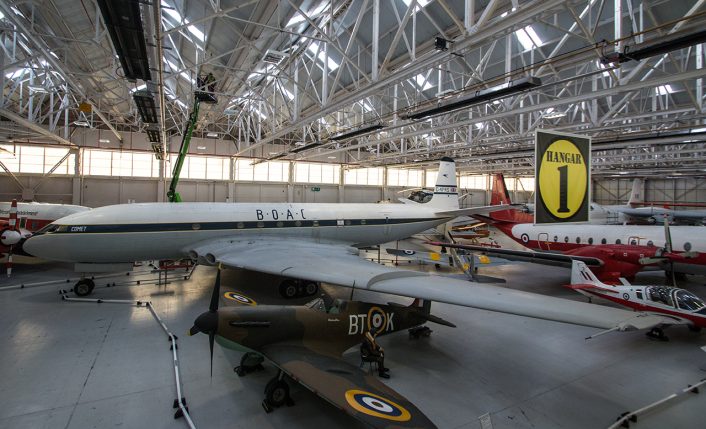
Several cockpit sections remain in various locations, while complete Comet airframes are on display at several museums. The Royal Air Force Museum at RAF Cosford, UK, possesses the sole surviving complete Comet 1. The Imperial War Museum at Duxford and the National Museum of Flight in Edinburgh both display a Comet 4, while the Science Museum retains a Comet 4 although it is not currently on public display. Internationally, Comet 4s exist in the collections of the Museum of Flight near Seattle, USA, and at Flugausstellung Peter Junior in Germany.

